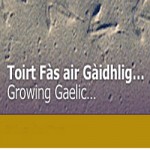THE RSPB are asking Western Isles cat owners to attach bells to their pet’s collars in order to provide vulnerable bird populations with a warning system.
Cats have been collared for a number of migrating corncrake deaths, there is thought to be good corncrake concentrations on Lewis, North and South Uist, Tiree and Coll.
Conservation officer Martin Scott: “Every year I see corncrakes that have been killed by domestic cats.
“It’s a real shame, for a bird that has just flown in from Africa, but by taking a few simple measures it may be possible to reduce the death toll.”
The birds are at most risk during the night when male corncrakes start calling and attract the attentions of predators.
“Hebridean islands”
Mr Scott added: “It would be great if cat owners in corncrake areas would keep their pets in during the hours of darkness.
“Another useful thing to do would be to add a bell to their collars. That heightens the chances of the corncrakes slipping away from the danger.”
The species is a long-distance migratory species that winter in sub-Saharan Africa and come to the UK in summer to breed.
Their favoured habitat is tall grasses and herbs, particularly hay and silage meadows.
However, in the late 19th Century the mechanisation of farming led to crops being harvested quicker and corncrake population plummeted and became restricted to the Hebridean islands.
In 1993, the British population was estimated at just 480 males heard calling for mates. But by 2003 this figure had almost doubled to 832 males.
Subsequent annual counts have shown that the population increase has continued with the latest figures from 2008 up to 1,140.
Hebrides Today brings you the latest news from the Western Isles
 Welcome
Welcome Area Commissioner Western Isles
Area Commissioner Western Isles New Gaelic Arts & Culture officer
New Gaelic Arts & Culture officer Western Isles no- fly zone lifted
Western Isles no- fly zone lifted